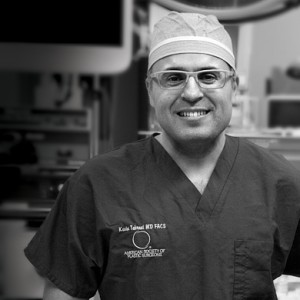Cellulite explained by Dr. Tehrani in New Beauty Magazine
Beneath the skin are columns of fibrous tissue that are surrounded by fat cells. “When those columns, known as septi, become imbalanced and the fat cells begin to bulge through (the columns don’t stretch to accommodate the fat), cellulite arises,” says New York and Great Neck, NY, plastic surgeon Kevin Tehrani, MD.
“Because of its vertical nature, it allows small pockets of fat to push up on the tissue, which is what gives the skin a dimpled look”.
 One of the best ways to reduce cellulite is to surgically cut the bands that surround the fat cells. A very small incision is made, and a cannula (the tool used during liposuction) is used to break the bands. “This procedure helps smooth out cellulite, which we can’t achieve with liposuction,” says Dr. Tehrani.
One of the best ways to reduce cellulite is to surgically cut the bands that surround the fat cells. A very small incision is made, and a cannula (the tool used during liposuction) is used to break the bands. “This procedure helps smooth out cellulite, which we can’t achieve with liposuction,” says Dr. Tehrani.
Another way of removing cellulite is using skin toners like VelaShape II, a super-charged version of the original VelaShape that merges suction, massage, radio frequency lasers and heat. The cons of this procedure can be difficult to know gauge who will respond, and the pros according to Dr. Tehrani are “It’s more promising than other machines, but, at most, you’ll get a 30- to 40-percent improvement.”
Another problem that prevents women from having beautiful legs are fatty thighs and knees that are predicament linked to hormonal changes, like pregnancy or menopause, when the body stores significant amount of fat. One of the areas where the fat is stored is where the butt and the upper thighs meet, forming the so-called “banana roll.”
“This is one area that responds extremely well to both laser and standard liposuction,” says Dr. Tehrani, who adds that “following liposuction the plastic surgeon should advise you to wear compression garments. Scar tissue forms internally after liposuction, and if it’s not smooth and level, irregularities can occur.”
Other fatty deposits are cankles, where the leg meets the ankle. The cure for more loose calves is using Botox for which “repeated treatments are necessary, but the calves can look smaller and less bulky,” says Dr. Tehrani who also explains that the fat cells in the ankle area can become engorged with no room to expand, which results in swelling of the ankle.
“The muscle can make them look big, as can edema, or swelling, so it’s important that your doctor properly identify what’s going on first”.
